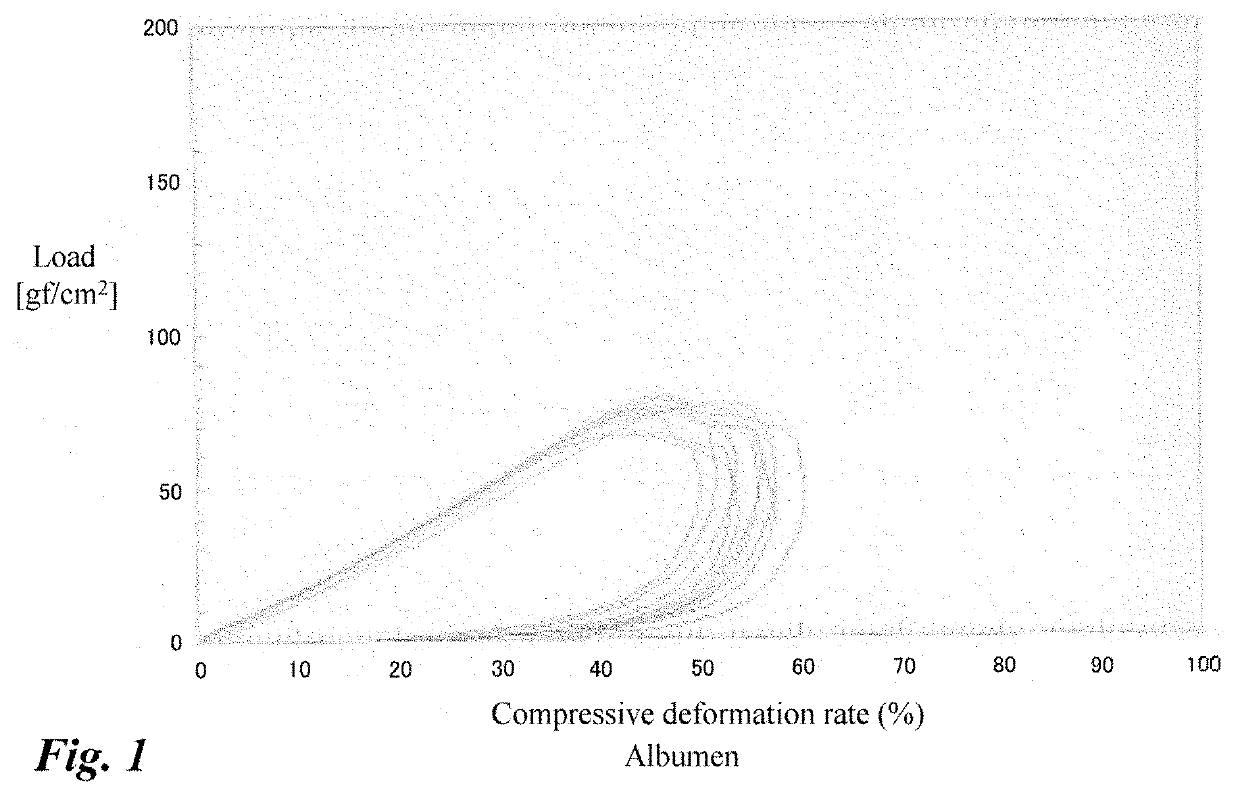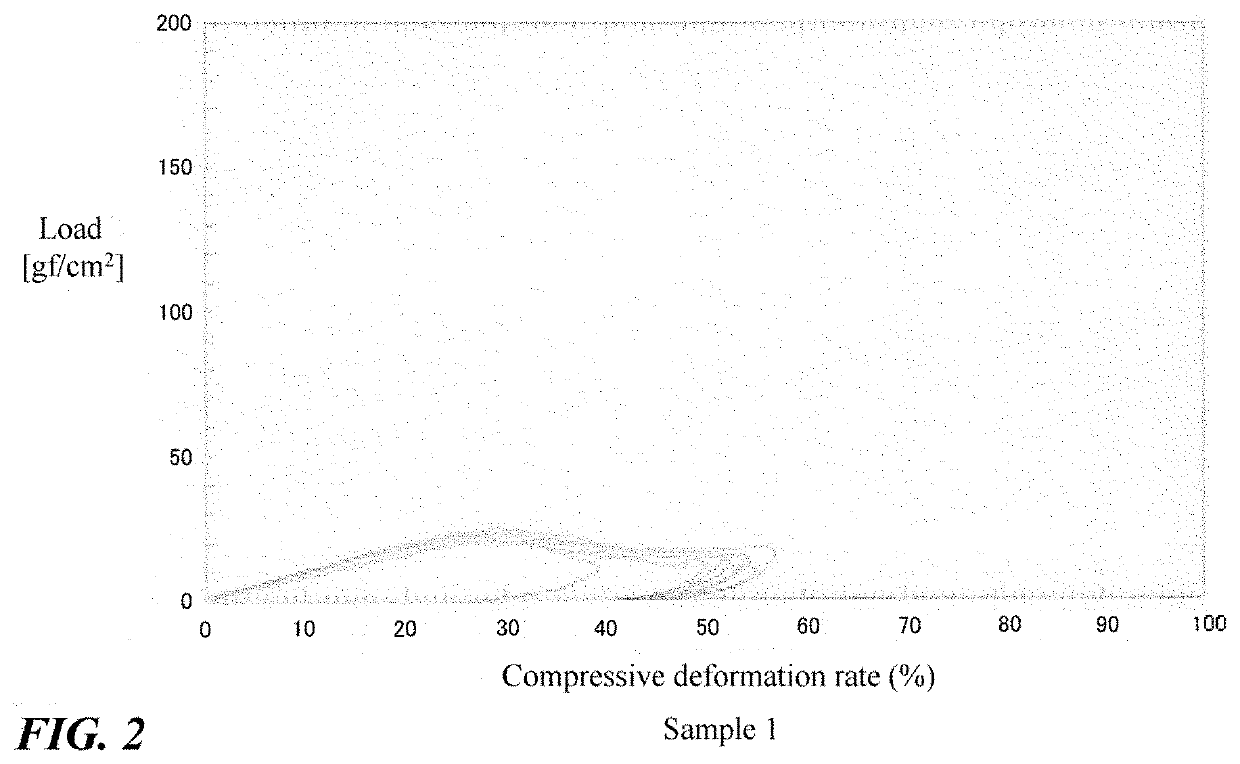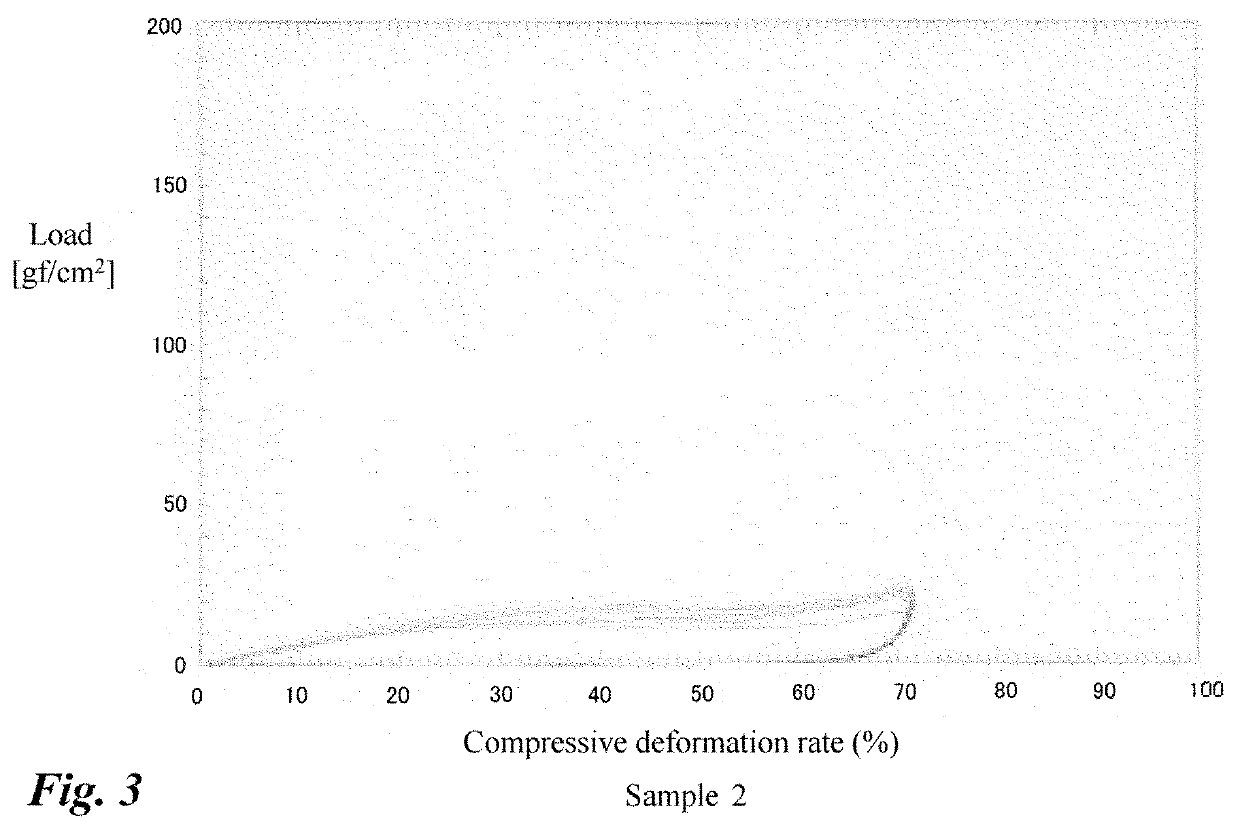Highly emulsifiable albumen hydrolysate
a technology of albumen hydrolysate and albumen, which is applied in the direction of transportation and packaging, mixing, chemistry apparatus and processes, etc., can solve the problems of poor emulsion stability, increased consumption of albumen hydrolysate, and inability to expect the improvement of emulsification capacity, etc., to achieve high-safe, less bitterness, and good flavor
- Summary
- Abstract
- Description
- Claims
- Application Information
AI Technical Summary
Benefits of technology
Problems solved by technology
Method used
Image
Examples
preparation example 1 preparation
of Albumen Hydrolysate (Study on Hydrolysis Degree)
[0096]Products (500 g each) prepared by adding a 10% citric acid solution (24 ml) to 3 L of an albumen liquid (pH 9.0) and adjusting the pH of the mixture to pH 7.5 were warmed to 55° C., and a heat resistant proteolytic enzyme (Thermoase PC10F: 90,000 units / g, Amano Enzyme Inc.) was added thereto in an amount of 0.1%, 0.2%, 0.4% and 0.8%, respectively. The resultant mixtures were enzymatically decomposed while being stirred at 55° C. for 10 minutes. Then, the albumen liquids were subjected to temperature increase to 65° C., and enzymatically decomposed while being stirred for further 30 minutes. Thereafter, the albumen liquid was immediately subjected to temperature increase to 90° C., and held for 10 minutes for enzyme deactivation. The albumen hydrolysates after the enzyme deactivation were stirred to be homogenized, thereby preparing albumen hydrolysate samples 1 to 4. Incidentally, an albumen liquid was similarly manipulated wi...
preparation example 2 mass preparation 1
of Albumen Hydrolysate
[0104]One hundred (100) Kg of an albumen liquid (pH 7.8) was warmed by a warm water circulation jacket tank (200-L-volume), and 200 g of Thermoase PC10 was added thereto and dissolved therein at 55° C. The liquid was stirred for 10 minutes. Then, the liquid temperature was increased to 65±2° C., and the liquid was stirred for 30 minutes. Thereafter, the liquid temperature was held at 95±2° C. for 5 minutes, and enzyme deactivation was carried out also for heat sterilization. Then, the protease-treated hydrolyzed albumen was stirred to be homogenized with a homomixer, thereby preparing 97.2 Kg of an albumen hydrolysate (Sample 6).
preparation example 3 mass preparation 2
of Albumen Hydrolysate
[0105]Using a warm water circulation jacket tank (200-L-volume) as a balance tank, 200 Kg of an albumen liquid (pH 8.5) was circulated to a shell & tube type heat exchanger, STD model (Iwai Kikai Kogyo Co., Ltd.) at a flow rate of 150 Kg / h, and, when the temperature of the liquid within the balance tank reached 55° C., 200 g of Thermoase PC10 was added and dissolved. The temperature was retained at 55±2° C., and the liquid was circulated for 10 minutes. Then, the liquid temperature was rapidly increased to 65° C., and retained at 65±2° C., and the liquid was circulated for 30 minutes. Finally, the liquid temperature was retained at 95±2° C. for 5 minutes, and enzyme deactivation was carried out also for heat sterilization. Then, the liquid was rapidly cooled, thereby preparing 193 Kg of an albumen hydrolysate (Sample 7).
PUM
| Property | Measurement | Unit |
|---|---|---|
| pH | aaaaa | aaaaa |
| temperatures | aaaaa | aaaaa |
| temperature | aaaaa | aaaaa |
Abstract
Description
Claims
Application Information
 Login to View More
Login to View More - R&D
- Intellectual Property
- Life Sciences
- Materials
- Tech Scout
- Unparalleled Data Quality
- Higher Quality Content
- 60% Fewer Hallucinations
Browse by: Latest US Patents, China's latest patents, Technical Efficacy Thesaurus, Application Domain, Technology Topic, Popular Technical Reports.
© 2025 PatSnap. All rights reserved.Legal|Privacy policy|Modern Slavery Act Transparency Statement|Sitemap|About US| Contact US: help@patsnap.com



